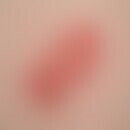Synonym(s)
DefinitionThis section has been translated automatically.
EtiopathogenesisThis section has been translated automatically.
You might also be interested in
ManifestationThis section has been translated automatically.
Particularly occurring in patients who were already treated decades ago for psoriasis vulgaris or anaemia (e.g. with Fowler's solution; use until 1966), who came into contact with arsenic-containing pesticides in wineries (viticulture; wineries, especially in the region of the Middle Moselle and Kaiserstuhl; pesticides containing arsenic were permitted until 1942) or in workers in copper mining and non-ferrous metal smelting. Damage caused by arsenic compounds is assessed and compensated according to BK 1108.
ClinicThis section has been translated automatically.
DiagnosisThis section has been translated automatically.
TherapyThis section has been translated automatically.
- Acute poisoning: 12-24 Kps Dimaval in 12 ED p.o.
- Chronic poisoning: 3-4 Kps. Dimaval in 2-3 ED daily, in case of severe poisoning higher dosage if necessary.
LiteratureThis section has been translated automatically.
Bauer A (2016) Skin cancer as an occupational disease. dermatologist 67: 884-890
Grobe JW (1992) Arsenic intoxication late sequelae in Moselle vintners. Close to the skin 92: 378-387
- Guo HR (2003) The lack of a specific association between arsenic in drinking water and hepatocellular carcinoma. J Hepatol 39: 383-388
- Ratnaike RN (2003) Acute and chronic arsenic toxicity. Postgrade Med J 79: 391-396
Incoming links (9)
Arsenic keratoses; Arsenic melanosis; Arsenic skin; Basal cell carcinoma superficial; Bowen's disease; Fowler's solution; Kaiserstuhl disease; Occupational dermatoses; Occupational disease according to bk 1108;Outgoing links (7)
Arsenic keratoses; Arsenic melanosis; Basal cell carcinoma superficial; Bowen's disease; Meese cross bands; Occupational disease according to bk 1108; Psoriasis vulgaris;Disclaimer
Please ask your physician for a reliable diagnosis. This website is only meant as a reference.





